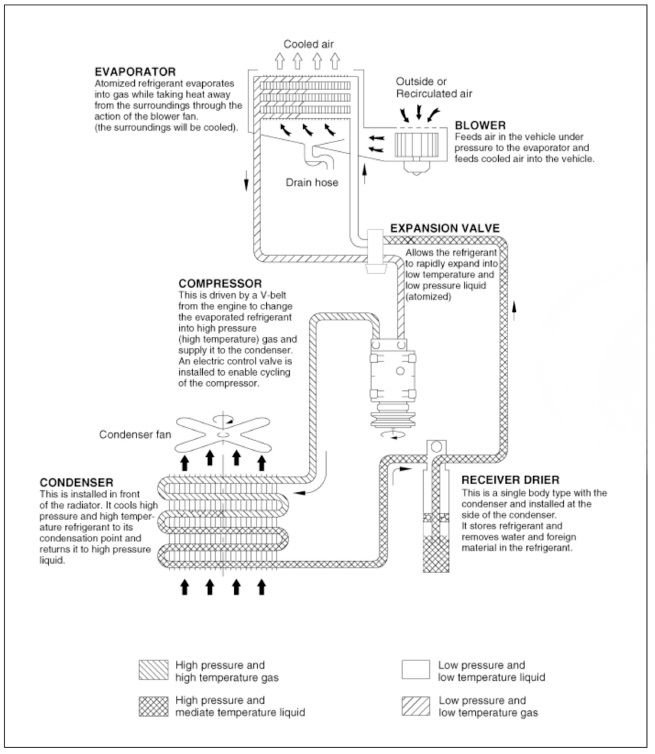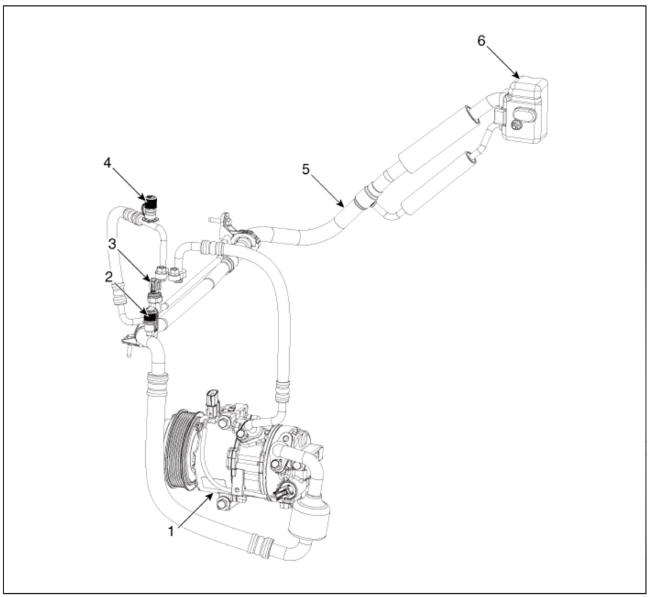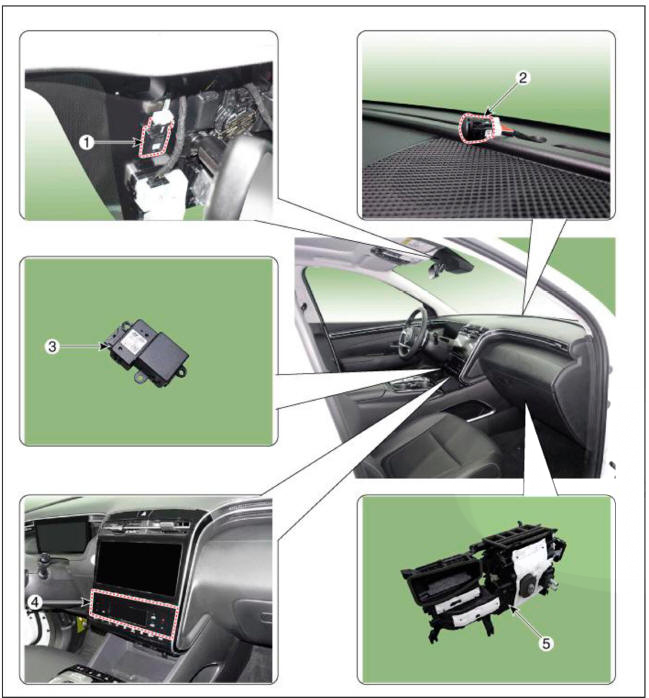Hyundai Tucson: Refrigeration Cycle

Engine Room

- Compressor
- Service port (Low pressure)
- A/C pressure transducer (APT)
- Service port (High pressure)
- Suction & Liquid pipe assembly
- Expansion valve cover
Interior

- Auto defogging sensor
- Photo sensor
- PM sensor
- Heater & A/C control unit
- Heater & Blower unit
READ NEXT:
 Refrigerant System Service Basics (R- 134a)
Refrigerant System Service Basics (R- 134a)
Refrigerant Recovery
Use only service equipment that is U.L-listed and is certified to meet the
requirements of SAE J2210
to remove HFC-134a(R-134a) from the air conditioning system.
WARNING
Air conditioning refrigerant or lubricant vapor ca
 Refrigerant System Service Basics (R- 1234yf)
Refrigerant System Service Basics (R- 1234yf)
Refrigerant Identification
Do not mix HFO-1234yf (R-1234yf) in the vehicle with other refrigerant,
such as R-12. R-134a and
etc.
Use only service equipment that is U.L-listed and is certified to meet
the requirements of SAE
standards
 Suction & Liquid Pipe Assembly
Suction & Liquid Pipe Assembly
Components
Suction & Liquid Pipe Assembly
Replacement
If a compressor is available, the air conditioner is operated for a few
minutes in the engine idle state and then
the engine is stopped.
Disconnect the negative (-) batte
SEE MORE:
 Wipers and washers
Wipers and washers
A. Wiper speed control (front)
MIST - Single wipe
OFF - Off
INT - Intermittent wipe AUTO* - Auto control wipe
LO- Low wiper speed
HI - High wiper speed
B. Intermittent control wipe time
adjustment
C. Wash with brief w
 Trip computer (Type B)
Trip computer (Type B)
The trip computer is a microcomputercontrolled
driver information system that
displays information related to driving.
Information
Some driving information stored in the
trip computer (for example Average
Vehicle Speed) resets if the battery is
Information
- Home
- Hyundai Tucson - Fourth generation (NX4) - (2020-2023) - Owner's Manual
- Hyundai Tucson - Fourth generation (NX4) - (2020-2023) - Workshop Manual